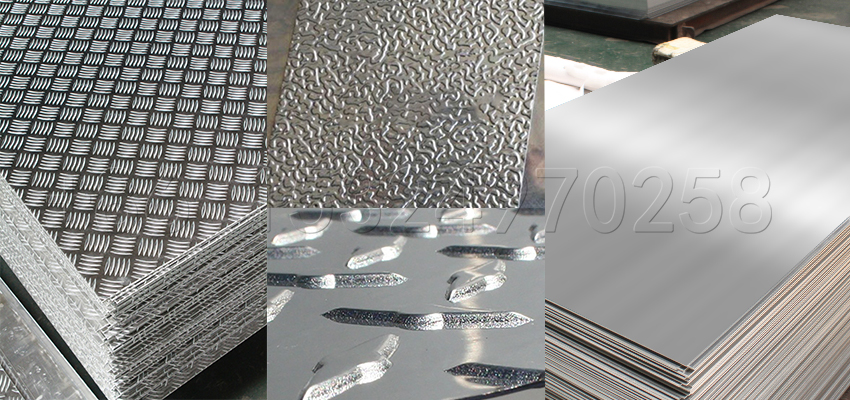Aluminium material is popular in the market. You can use it in many different fields. Then do you know the different classifications of aluminium sheets? Here are some common classification methods for you to know the aluminium sheets better.
- Different aluminium alloy grades: Classifying the aluminium sheets by aluminium alloy series is the most popular method. We classify them according to the different chemical contents. For example, the 1000 series aluminium is also called pure aluminum. Its aluminium content is more than other series aluminum. As for the 3xxx series aluminum, there are more manganese content than pure aluminum and 5000 series alu magnesium alloy sheets. The common aluminium alloy series are 1000 series, 2000 series, 3000 series, 5000 series, 6000 series and 7000 series.
| 1000 Series pure Aluminium | 1050/1060/1100/1235/1145 |
| 2000 Series Al-Cu Aluminium Alloy | 2011/2014/2017/2024/2124 |
| 3000 Series Al-Mn Aluminium Alloy | 3003/3004/3105/3102 |
| 4000 Series Al-Si Aluminum Alloy | 4017 |
| 5000 Series Al-Mg Aluminum Alloy | 5005/5052/5083/5086/5182//5251/5454/5754/5A05/5A06/5B59 |
| 6000 Series Al-Mg-Si Aluminium Alloy | 6061/6063/6082 |
| 7000 Series Al-Zn-Mg Aluminium Alloy | 7075 |
| 8000 Series Al-Li Aluminium Alloy | 8011/8079 |
- Different aluminium tempers: Aluminium tempers is a more detailed classifications than aluminium alloy grades. The common states are O temper (soft state), H temper(hard state), T temper (heat treatment state) and so on. Generally, the temper is going to be behind the alloy. Take 5083 h116 as an example, the 5083 is aluminium alloy No., and h14 is the temper.
- Classification by applications: Aluminium sheets has wide applications. For the commonly used aluminium in different fields, there are ship use aluminium, car use aluminium, sign plate aluminium and so on.
- Classification by thickness: According to the thickness, there are aluminium thin sheets, aluminium thick plates and aluminium foils. Generally, the aluminium sheets and plates have little differences on the thickness. While, the aluminium foil is special, its thickness is about 0.002mm to 0.2mm. It is thinner. For your reference, we also have coil roll aluminium, whose thickness is under 5mm.
- Classification by surface: According to the surface treatment, the common surface treatment methods include anodizing, spraying, coating. And according to the surface patterns. Except the smooth surface, there are also patterned aluminium, whose surface has different patterns, such as 5 bars, diamond and so on.

The above are only some common methods of aluminum plate classification for your reference. If you have more interests on our aluminium sheets, you can send inquiry to us free. We have professional team with experience.

